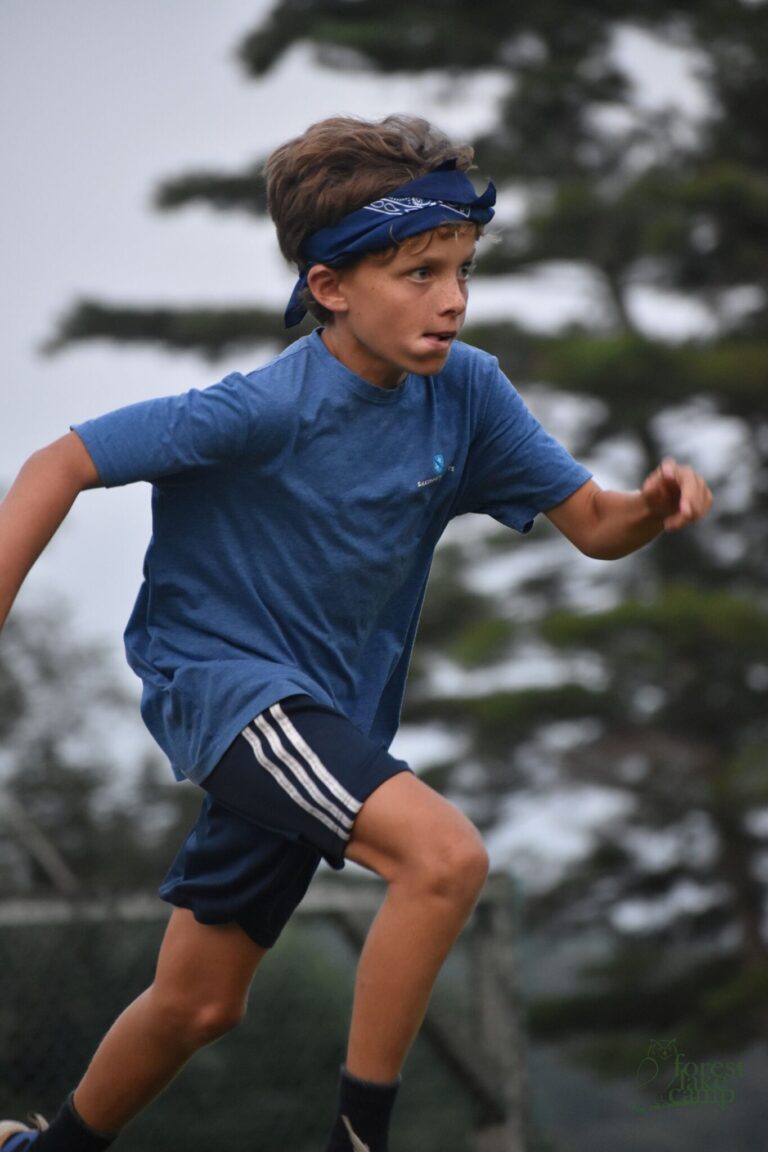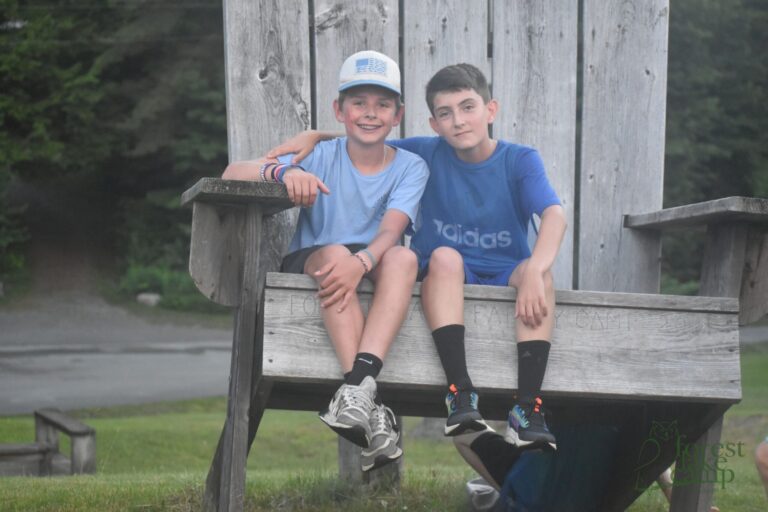Man Overboard on Mt. Marcy and One Photogenic Bear
Everyoneʼs first hike up a major mountain guarantees an exciting day—made even more memorable when followed by the first night camping out in a tent. When such a day is topped off by rescuing a fellow hiker about to go overboard, the day becomes truly unforgettable.
Such was my good fortune at the age of fourteen on a hike up Mt. Marcy, the loftiest of the Adirondacks in New York state. Setting out on a chilly summer morning in 1952 from Forest Lake Camp in Warrensburg with my cabin-mates and a couple of counselors, we managed to keep from freezing in the back of the campʼs open stake-bodied truck by singing camp songs as lustily as possible. Our trusty but drafty WWII surplus vehicle had quick-frozen hundreds of campers over dozens of trips, but the camp staff always managed to thaw us out in time to return us home in admirable shape—sun-tanned, fit, and brimming with great Forest Lake Camp stories.
In the early 1950s, military veterans had experienced more than their fill of hiking and camping practice during World War II and most were not eager to volunteer for more. The development of such gear for civilians was in its infancy, and very little civilian gear was available. Most hiking and camping equipment was therefore war surplus—inexpensive and durable but bulky and heavy–tents, sleeping bags, packs and ponchos–built for hard wartime service. The armed forcesʼ standard for durability was clearly weight. While war surplus gear might not stop 50 caliber machine gun fire, we always suspected it could have easily deflected 22 caliber bullets, although we never actually tested that theory at the campʼs rifle range.
After packing our bulletproof tents, sleeping bags and ponchos on wooden packframes that we had made in camp and starting up the mountain, within five minutes we were all convinced that our pack weights were at least as much as our own weights, if not more, and seemingly increased unabated as our hike progressed. It came as welcome news indeed when our counselors announced we could stop part-way up Mt. Marcy beside a mountain stream at Indian Falls, select a spot to pitch our tents and spend the night there. We were all ravenous from our hike and thoroughly relished our dinner, after which we were more than happy to “hit the sack” in preparation for the remainder of the hike up and down the next day.
The war surplus tents we carried were very heavy cotton canvas shelter halves, meaning each person had to button his shelter half to that of a partner to construct a complete tent. “Complete” is a generous description, since the tent for two people was about three feet high at the peak, four feet wide, six feet long, open at one end and lacked both floor and mosquito netting. It did offer protection from above but nothing below or at the open end. Even as boys, we needed to be skilled contortionists to sit up inside, hunched over, to even change a shirt in that canvas cocoon. How grown men managed to do so on the battlefield was beyond our imagination.
As I recall, we all lacked ground cloths, air mattresses or sleeping pads and had to place our sleeping bags directly on the ground. Those of you who have tried to find a tent site on the side of a mountain know from personal experience that flat ground is almost nonexistent and an area free of rocks and roots is also a rare commodity. While other campers complained of hard, bumpy, sloping ground, my tent-mate John Emmerich and I found a truly luxurious site—a soft, deep bed of moss, akin to finding the Waldorf Astoria halfway up a mountain trail. One end of the spot was slightly higher than the other, so we pitched the closed end of the tent there and placed our feet downhill, toward the open end. In great contentment we buttoned together our shelter halves, pitched our tent on the moss, and climbed into our sleeping bags.
Johnʼs sleeping bag was undoubtedly the largest, bulkiest and heaviest in our entire group—a U.S. Navy surplus bag filled to the brim with heavy, lumpy kapok—the same material the Navy used to fill life jackets. It had a lofty thickness more suitable for a polar expedition than a summer night on a New York mountain. Its bottom was rubberized and therefore waterproof—which seemed a great idea since we were without groundcloths. John and I were grinning and congratulating ourselves at our exceptional good luck in finding a soft site as we heard complaints drifting from other tents about their uncomfortably uneven, bumpy and rocky ground.
With the exertions of the day just completed, John and I had no difficulty quickly falling asleep, although the campers in other tents likely took a while longer to follow suit. Sweet indeed is the slumber of those who have lugged their own weight up half a mountain. About midnight, we were awakened by thunder and lightning, soon followed by a torrential downpour. John and I enjoyed the luxury of our soft moss mattress and the drumbeat of rain on our waterproof canvas roof. Our moss floor was becoming a bit damp, but we were too warm and comfortable to be concerned, not realizing that the bed of moss was serving as a gigantic sponge.
As the rain slackened and we were both about to fall back asleep, I opened one eye and noticed Johnʼs sleeping bag, with John entrapped, drifting slowly downhill toward the mouth of the tent. It took a moment for it to dawn on me that John and his waterproof bag were being floated by the water now rushing through the moss and were drifting boat-like, feet-first, out of the tent, with only his upper half still remaining under cover. Had I not been awake, it would have indeed been a case of “man overboard”–floating John in his waterproof sleeping bag down Mt. Marcy. I grabbed Johnʼs bag with John trapped inside, anchored myself sufficiently in the moss and, by dint of strenuous effort, pulled John and his bag back into the tent. By placing our pack frames and other gear toward the tentʼs open end, we were both able to keep from floating off, although for the remainder of the night it sure was wet in that tent!
In the morning, we discovered that our ”nice soft bed of moss” was in fact a dry stream bed that led to the nearby brook It evidently filled with water each time it rained—hence the moss growing there and almost nowhere else on the mountain. When the others heard our story, our ”brilliant” tent location that had been the subject of much envy ended up being the source of much merriment. He who laughs last laughs best!
After breakfast John and I redeemed ourselves with our fellow hikers by climbing along the rocky banks of the nearby stream and discovering several Boy Scout cook kits washed away from some other unfortunate hiking party either that previous night or earlier. I have used my share of this cooking gear in dozens of camping trips since, as an adult, being reminded each time of that eventful night when John nearly went overboard on Mt Marcy.
One Photogenic Bear –A Maine bear who enjoyed being photographed
In mid-September 1997 I drove from our home in Wellesley to the northern end of Baxter State Park in Maine to hike The Traveler mountain. It was cool and clear, visibility unlimited, and the next few days promised to be ideal weather for hiking. Trees are primarily evergreen as you proceed north in Maine, but the deciduous trees– especially the maples–displayed their increasingly cheerful end-of-season colors as I progressed north and autumn approached.
Entering Baxter Park by the Matagamon Gate at the northeast corner, I continued to South Branch Campground where I pitched my tent, cooked dinner and set up shop for the night. This is the usual jumping-off point for hikes in The Traveler area.
The lengthy drive prepared me for a night of sound sleep. The next morning after cooking breakfast, I struck my tent and packed all my gear in the trunk of my car, with the exception of my daypack, lunch and hiking gear for the day.
Baxter Park has a good system for tracking the whereabouts of hikers—you must register your name, intended route, time of leaving and expected time of return with the ranger at your starting point, which I did. The day was cool—in the 40° F range–and clear as I set out at 7 AM toward The Traveler, a trailless peak, on a cross-country bushwhack.
Not realizing that the temperature had dropped below freezing in the mountains during the night, I soon discovered by experience that several wet-looking spots on bare rock turned out to be icy, and I slipped and fell a few times before rising temps melted the ice. Fortunately the falls resulted in nothing worse than a banged-up leg and hip, and I kept going.
Most of upper elevations of The Traveler are bare and provided clear views for miles as I approached the top. A patch of loose talus rock provided another fall just below the summit, and this one opened a gash in one eyebrow, but I patched over it with my kerchief headband and I reached the summit without further incident. As usual, I enjoyed my lunch at the top, with magnificent views in all directions, and after this half- hour break then headed back down toward the campground.
On the descent, my banged-up leg and hip began to stiffen up but did not interfere with progress except to slow me down a bit. It had been a lengthy bushwhack, and it was nearly dark and after 8 PM when I arrived back at the campground. My plan had been to drive south within the park and camp at Katahdin Stream Campground that night in preparation for further hiking in that area the next day, but after thirteen hours of hiking and with my stiffening legs, I felt a better plan might be to forego hiking the next day and head home. However, since I had packed up my tent in the car, I still faced an hourʼs drive south to Katahdin Stream, where I had reserved a campsite. My main short-term objective was dinner and a good sleep.
While signing back in at 8:30 on the hikersʼ register with the ranger, he asked, “You donʼt really want to drive down to Katahdin Stream tonight, do you?”
I responded, “Not really—but Iʼve already packed up my tent this morning and I might as well pitch it there as here.” With empathy for my thirteen hours of hiking and somewhat beat-up condition, the ranger continued, “How about if I offered you a lean-to on the shore of the pond at the price of a campsite and radioed Katahdin Stream to cancel your reservation there?”. That was, as they say in The Godfather, an offer too good to refuse, and I readily accepted the chance to skip setting up my tent and to dine and sleep an hour earlier. Picking up my car in the parking lot, I drove to my lovely bargain-priced lean-to in a small clearing on the pond, with paths connecting to similar lean-tos on either side. Not wishing to take time to build a fire and cook dinner, I dined heartily on cold food, packed it all in the trunk of the car, and carted a few essentials to the lean-to for a much- anticipated night of sleep.
Starting with my first trip to Baxter Park in 1975 with my wife, Barbara, and daughter, Jennifer, we had enjoyed the premier evening entertainment available in the park— going down to the dump after dinner and watching the black bears dine on the campersʼ discarded food scraps. Their presence and comedic talent in the park was well- established and appreciated by park visitors. They put on a great comic act—which is a whole other story—and that dump had since been closed. But I had learned from observing them numerous years since then that they were singularly focused on finding food and caring for their cubs. People, cars and camera flashes didnʼt bother them so long as we didnʼt deter their primary interests. Based on the bearsʼ almost continual appetite, packing food in the car trunk, away from the lean-to, was a sensible move.
I took a minimum of gear to the lean-to from the car–my sleeping pad, sleeping bag, hiking staff, flashlight, a canteen of water and my camera—with the hope of getting a moonlight picture of the pond. I positioned my sleeping pad and sleeping bag with the foot at the open edge of the shelter, looking toward the pond and fireplace. Within minutes of lying down, I was sound asleep.
A few minutes later, I was awakened by some small sound. I looked out the open side of the lean-to toward the rock fireplace about ten feet away, and it looked in the moonlight to be a bit larger than when I had retired for the night. I shone my flashlight on it and what was there but a smallish black bear—about 150 pounds—systematically licking the iron grill, on which some previous campers had probably grilled some meat. “What a great photo”, I said to myself, and I grabbed my camera, aimed, zoomed in, and took it. It would be fun to get that film developed and see such a closeup of a bear and her enthusiastic dining.
Knowing the bearsʼ nearly unrelenting interest in food, I wasnʼt at all concerned about her nearby presence. What could be more unappetizing than a sweaty hiker when there was nice steak grease around? Although dearly longing to go back to sleep, I decide to try to stay awake until she left the campsite—and possibly get another picture or two. I lay back down and waited.
The next sound I heard was a low rumbling of rocks being moved and dropped. I sat up and shone my flashlight on the fireplace, which the bear was systematically dismantling. She would pick up a rock (each about the size of a melon), turn it over lovingly in her paws, lick off every bit of grease she could find, and toss it aside before tackling the next rock. By this thorough approach to things, she would not miss a scrap of that delicious grease, but the campsite ended up with only a circle of rocks where the fireplace once stood. This comedic performance deserved a few more photos, which I took. The flash didnʼt disturb her in the least. She was evidently quite familiar with the fame that accrues to good comedy.
Again I lay back down, trying to stay awake until she left. After a few minutes of quiet, I sat up and discovered her standing at the open end of the lean-to platform, about a foot from my feet, sniffing curiously at this visiting creature in the sleeping bag. Confident that my sweaty feet would certainly not be of dining interest, I took another photo—this time about five feet from my photogenic subject. She was unperturbed and didnʼt mind the photographer or the flash in the least.
As I lay back down she ambled down the path to the lean-to on my left, discovered their metal pots and dishes on the table–probably drying after their dinner–and evidently inspected them quite carefully for food, as I heard them all being scattered on the table and the ground. Not finding anything of interest to eat, she then moved further on, and that was the last of her performance for that night—at least for me. Perhaps other campers further down the pond got to enjoy a later show.
The next morning I cooked and ate a hearty breakfast but had to admit that my stiffness from the hike had advanced. I hobbled to the car, drove home and hobbled around home with the aid of a walker for a few days before I could manage to walk without it. The film in my camera still had about a dozen shots remaining, so I hoped to finish taking that roll soon and have it developed and printed so I could see and display my great bear pictures.
The following weekend I was scheduled to drive to the Adirondacks to hike with a friend, Mike, who owned a cabin there. We had hiked together in the past both there and in New England. As the weekend approached, I was still too stiff to hike, so I called Mike and we agreed to meet but to canoe instead of hike. This we did, and I got some spectacular foliage shots during our Saturday of canoeing. Sunday morning I headed home and stopped several times to take additional Adirondack foliage shots, since the leaves were as colorful as I had ever seen them.
35mm film cameras of that era accepted a cartridge of 24 or 36 shots, and, if you were lucky, you might get an extra one or two on a roll. So my roll of 24 might have yielded as many as 26 photos. When the film counter on my camera reached 28, I knew there was a problem and stopped taking further shots.
That night at home, in a totally dark room, I unloaded the film from my camera, and guess what? The film leader had never engaged in the takeup roll but remained the whole time on its roll in the supply cartridge. The motor to advance the film whirred after each shot as it should have, and the film counter advanced each time, but the film never advanced but remained safely and entirely unexposed in its original cartridge. So…thatʼs why this true story of the photogenic bear is not illustrated.
And, as my daughter Jen said when learning of this unsuccessful photographic adventure, “Sure, Dad. Sure you saw a bear!”
by FLC Alum, Gary Emmer © 2015





